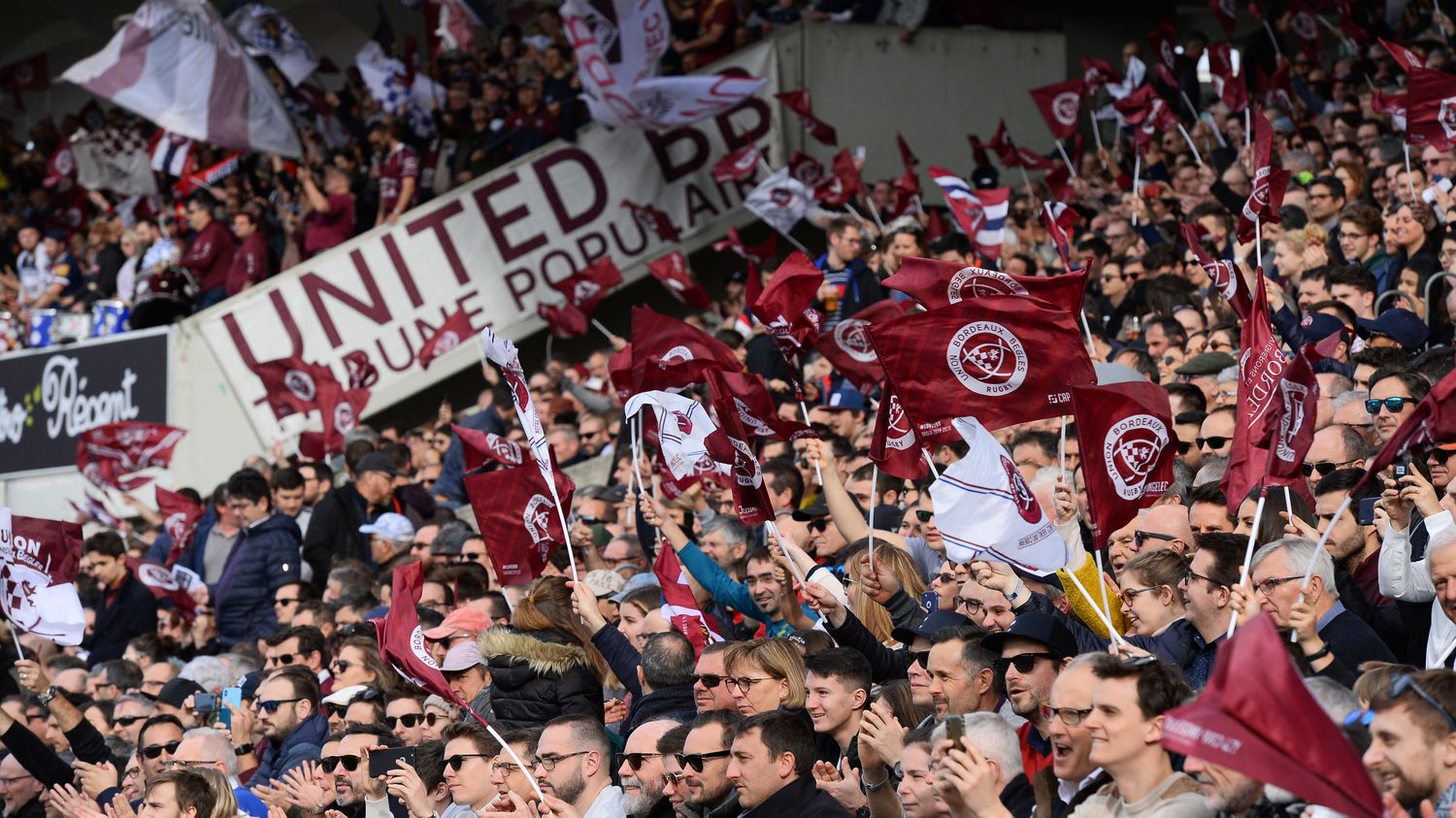Born from the merger of two Gironde rivals, Stade Bordeaux and the Béglais Athletic Club, Union Bordeaux-Bègles climbed the ladder until its first final of the French championship on Friday.

Published
Reading time: 5 min

How much weight does history have? Up against the centenarian Stade Toulousain, who have not lost a final since 2008 (nine victories), the very young Union Bordeaux-Bègles (UBB) dreams of overthrowing the ogre to offer themselves a very first trophy, Friday June 28 (9 p.m. on France 2 and france.tv) at the Stade de France. If the Stade bordelais (SBUC) had seven French championship titles (between 1899 and 1911) and the Club athlétique béglais (CAB) two (in 1969 and 1991), the club that was born from their merger had to build its own history.
UBB can now start a back line composed of 100% players who play alongside the French XV, with Maxime Lucu, Matthieu Jalibert, Yoram Moefana, Nicolas Depoortere, Louis Bielle-Biarrey, Damian Penaud and Romain Buros. A luxury that it can afford after nearly two decades of a methodical rise, almost without a hitch despite the skepticism that the club’s project has long aroused.
2006: the union of two rival clubs
The Bordeaux-Bègles Union is the story of a marriage of convenience which founded a happy family. The work of political leaders of the two cities and athletes on both sides, the merger was a pragmatic response to the difficulty of convincing local partners and investors in the absence of regional hegemony. In 2006, the two clubs had been stagnating for several seasons between Fédérale 1 (third division) and Pro D2 (second division).

“The rivalry is ancestral but the economic reality is inescapableremembered Alphonse Miralles, sports coordinator of the UBB and emblematic figure of the Béglais Athletic Club, on the site actu.fr in 2016, on the occasion of the tenth anniversary of the Union. When the bans are published, it is a terrible ‘squabble’ which will last several weeks. Some felt betrayed and the first two years will be complicated from this point of view…”
2007: arrival of President Laurent Marti, guarantor of Bordeaux-Bégla identity
Illustrating the difficulty of reconciling the two cultures, the club took the convoluted name of Union Stade bordelais-CA Bordeaux Bègles (USBCABBG) and alternated between the stadiums of its two parent clubs for home matches. It was only when Laurent Marti arrived as president a year later that the club decided and embraced its plural identity: it adopted its current name and settled permanently at the Stade André-Moga in Bègles.

Even if it always manages to satisfy both camps of a club that is still composite, the Union is ratified and the results, improving between 2007 and 2010, follow quickly. “Fonfon” Miralles sees this as the beginning of the Bordeaux-Béglaise story: “In fact, this ‘war’ will last until the day when the general public understands that this team can move up the hierarchy, that it has a future with the greats of French rugby. The club will indeed very quickly change dimension with Laurent Marti and no one can deny the evidence.” That of a well-structured club, with sporting ambition in line with its constantly growing financial resources.
2011: the rise to the Top 14 rewards an offensive philosophy
Although narrowly qualified for the play-offs to reach the Top 14, in 5th place, Union Bordeaux-Bègles beat the favourites Grenoble and Albi to invite themselves for the first time into the elite of French rugby. The offensive game advocated (24 points scored on average per match, 2nd in the championship) pleases the public and bears fruit.
At the dawn of their first season in the Top 14, the Bordelo-Béglais already see the opportunity to establish themselves among the giants of French rugby: “Culture, roots, passion, potential, all the ingredients are present”assured the coach at the time, Marc Delpoux, to the organizers of the 2010-2011 Rugby Night, where he was honored with his assistants among the “Best staff of the season”. “It’s up to us to prove on the pitch that a big club in Bordeaux is obvious”he predicted.
2015: installation at the Stade Chaban-Delmas
When the Girondins de Bordeaux left their home ground, the Union Bordeaux-Bègles immediately adopted it, the Stade André-Moga in Bègles having become too small. The public followed without delay, and the Unionists benefited from the first year of the best attendance in Europe, which led them to their first qualification in the Champions Cup. For ten consecutive years now, the UBB has played in front of the largest audience in the French championship.

“This public has supported us sportingly for years, but also economicallyentrusted President Laurent Marti to The Team on June 14. He gives me the motivation to continue fighting for the club. Going to the stadium is the pleasure of the week, the reward for everyone: the players, the staff, the managers, the supporters, the volunteers. It’s a moment of sharing.”
2021: first final stages of Top 14 and defeats against Toulouse
For the first final in its history this year, Union Bordeaux-Bègles returns to the legendary Stade Toulouse, which intends to score a third Top 14-European Cup double after its triumph against the Irish Leinster last month. In 2021, the Rouge et Noir had rightly dismissed the Bordelo-Béglais on the road to each of their coronations, in the semi-finals each time.
Since then, Christophe Urios has given up his place on the unionist bench to Yannick Bru, formerly of the Toulouse house, and the UBB has strengthened. No less than four off-season recruits were among the starters in the semi-final won against Stade français (22-20): Carlü Sadie, Adam Coleman, Tevita Tatafu and the wisp of the Blues, Damian Penaud. What “to make UBB history”objective stated by the hooker Maxime Lamothe, Gironde by birth and child of the club, in a press conference before the final.
